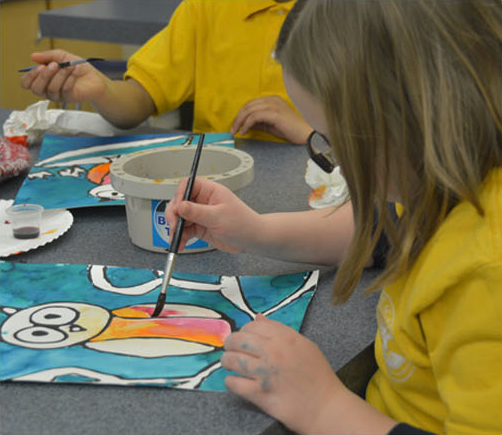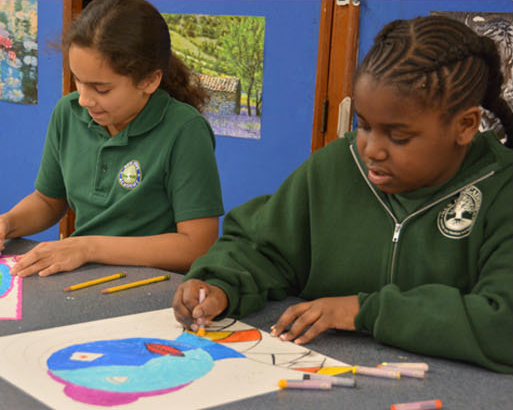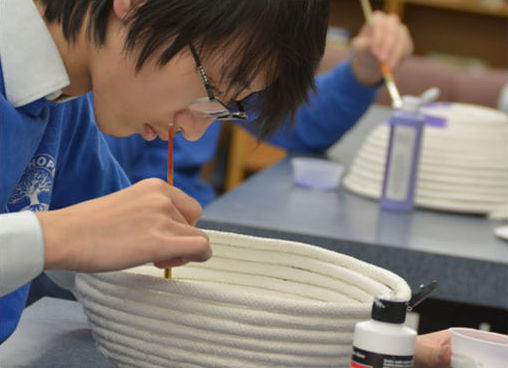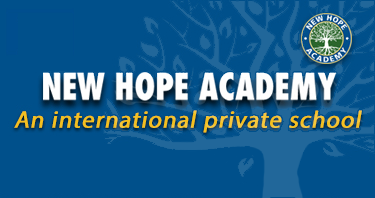

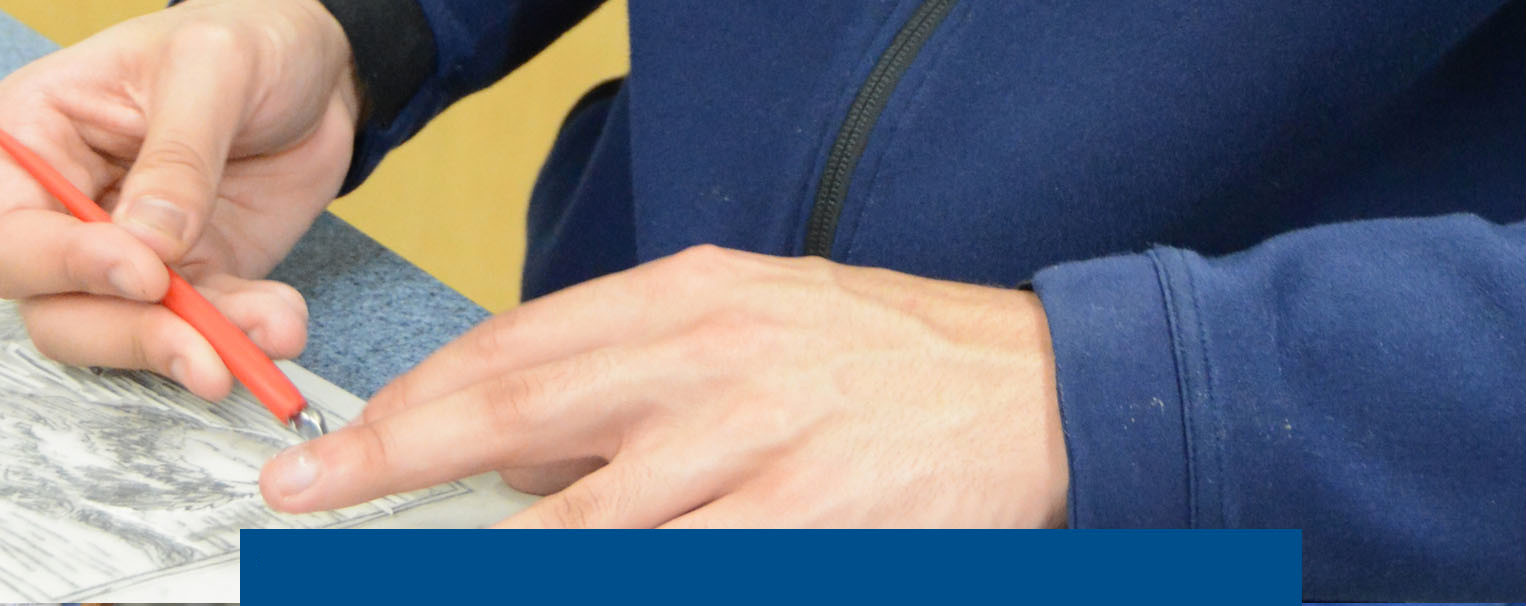
Children are naturally creative. It is our job to give them the freedom, materials & space to let their creativity blossom to it's full potential
Jean Van't Hul, author of the "Artful Parent"Visual Arts
The NHA Visual Arts program is essential to cultivating both intellectual and creative expression. Student artists explore a wide range of mediums including painting, drawing, technical drawing, print-making, collage, paper maché, linocut, and mixed media. Projects foster creative experimentation and challenge students to further their own unique vision and style.
Creating art enables each student to discover their creative vision while acquiring technical skills that are not as easily accessed in general education classes. Though one's personal creativity may need to be discovered through exploration. The visual arts program at New Hope Academy is grounded in the belief that art is an intellectual as well as creative process and that skills in art-making in a logical, sequential manner, with the freedom to explore.
Our curriculum stresses the development of perception and drawing, design, problem-solving, persistence, and technical skills. Classes draw inspiration from current culture, global influences, nature, and classical art traditions. The instructor will work with students to possibly include an annual gallery show.
Research consistently demonstrates that developing creating thinking through the arts fosters more success, greater happiness, and fulfillment, and enables creative problem-solving in all aspects of life. Students look forward to their art classes every week at New Hope.
Why does New Hope Academy emphasize the Arts?
"As a school, NHA understands the importance of strong academics, but if you want to know yourself and get in touch with your soul, you have to create."
Principal Joy Morrow
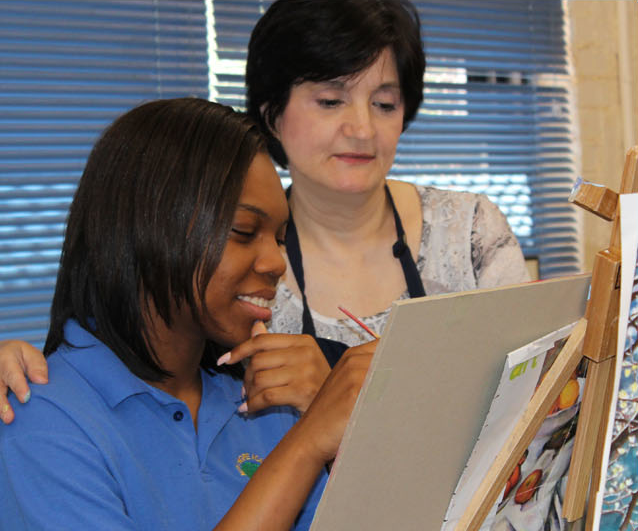
Why Do I Love Teaching
It's amazing because I get to teach what I love: to teach students something they never knew about - maybe a new artist that inspires them or a new medium of art they love.
Many people believe that artists are born that way - that talent can't be taught - and that you are just an overseer of people that have 'talent'.
The problem is, too many people believe this and buy into the lie of talent and conclude that since art is a talent - you either got it or you don't. As an art teacher, I deal with this misconception daily. People make excuses based on this misconception, and if you're an art teacher and you buy into it, your students will suffer. The first principle in becoming an effective art teacher is to drop the word 'talent' from your vocabulary. My basic approach to teaching is that artistic ability is not just an innate talent but can be learned or improved just like other activities.
Elementary
Primary grade children are beginning to understand that art is a way to communicate. They love to draw and their creations reflect their experiences, imagination, and emotions. They will use a wide range of materials to explores their creativity and learn techniques, including basic concepts of form, scale, and color.
Middle School
Middle School students focus on going deeper and begin to apply learned skills and techniques to discover their personal creative expression. Projects and assignments promote the development of creative, analytical, and critical thinking skills. Assignments draw inspiration from master artists, contemporary artists, art from various cultures around the world, as well as images from popular culture. Students will continue to explore foundational skills in drawing, and explore a variety of painting mediums (acrylic, watercolor, oil), as well as design and crafts.
High School
Upper School students are required to take a full year of art in grades 9 and 10. In addition, students may choose one or two optional elective classes in fine arts, each year. Upper School student artists can pursue their passions through advanced coursework, such as elective in Anime, Manga drawing, oil painting, CAD, or independent study, arranged with the instructor. Students who are considering an art career, may develop a body of sophisticated personal work to create a portfolio for college submissions for undergraduate are and architecture departments.
